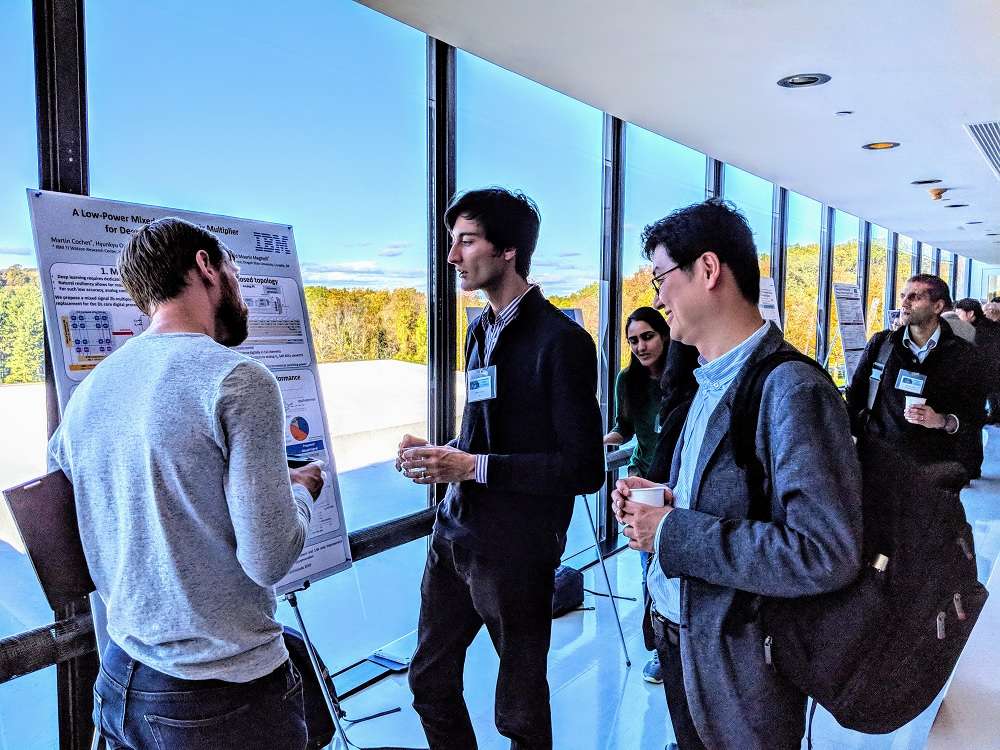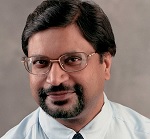From Brain to Brainstorming for AI
Article By : Junko Yoshida

IBM held its first AI Conference late last year. On-the-ground-report filed by IBM researcher offers a great tool to find out who's who in the field, and the AI problems researchers are pushing to solve.
Now that the Consumer Electronics Show is over, let’s shift gear and move our attention from shiny gadgets to grownup stuff, like Artificial Intelligence technology.
Before I headed to Las Vegas with my sidekick Brian Santo, editor-in-chief of EDN, both of us fully expected to hear lots of AI talk and see loads of AI-integrated devices at CES.
Surprisingly, we encountered less AI buzz than we’d anticipated. Mostly, it was what we already knew, such as AI for voice (i.e. smart speakers, smart toys) and AI for computer vision (i.e. autonomous vehicles).
Evidently, in initial commercial deployment, AI is focused on convenient, easy-to-use UI (voice) for consumer products.
Consequently, voice AI supported by Amazon, Google and Microsoft is popping up everywhere, as another product gimmick for CE vendors. Qualcomm, for example, had a demo car with Amazon’s Alexa in the cockpit.
For most of us writing about the first big wave of voice AI since last year, what we saw at the CES in AI was ho-hum.
As a reporter covering this industry, I’m humbled by my ignorance of AI. There’s so much to learn. In my 2019 agenda, I listed among my resolutions that I want to learn where the industry is going in “broader AI,” to understand what it means for IoT to combine “distributed AI and ML applications,” to know where we are with “bio-inspired chip designs” and how they relate to AI. I also think about the explainability, security and fairness of AI.
Obviously, the place to start isn’t CES. (What was I thinking?) AI is still trapped behind the walls of R&D departments and academia, although some advances have begun trickling into the public domain.
Luckily, I was approached by Rajiv Joshi at IBM Research Division who organized last fall the AI Compute Symposium at the IBM T.J. Watson Research Center. He told me how the first AI Symposium came about in close collaboration with the IEEE Circuits and Systems Society and the IEEE Electron Device Society.
I asked Joshi to thumbnail the discussion at the AI Symposium (since I wasn’t there to cover it), and he filed an easy-to-digest on-the-ground report. Although the conference was more than two months ago, Joshi’s report (read it in its entirety below) offers the big picture of what’s happening on the front lines of AI research. It’s a great tool to find out who’s who in the field, and the AI problems researchers are pushing to solve.
Even better is that the next AI Symposium is being planned for the middle of October this year, according to Joshi. The event is free to all professionals, professors, and students. The first AI Symposium was limited to about 160 people late last fall.
Joshi, an IEEE Fellow, is key technical lead, master inventor and a member of the Academy of Technology at IBM. Joshi’s fellow leaders of the AI Symposium include Matt Ziegler, principal research staff member at the IBM T.J. Watson Research Center, and Arvind Kumar, manager and research staff Member at IBM T.J. Watson Research Center. Ziegler and Kumar worked as program chairs. Other scientists integral to the Symposium include Eduard Alarcon, professor at UPC Barcelona Tech, and Editor-In-Chief of the IEEE Journal on Emerging and Selected Topics in Circuits and Systems, and Pamela Abshire, professor at University of Maryland and IEEE Fellow.
For those of you looking for transcripts of the speeches made at the first AI Symposium, "A book with slides from invited speakers to be published River publication (sponsored by IEEE CAS) June -July 2019 time frame," according to Joshi. Selected papers will likely appear in IEEE JETCAS Journal later this year. Meanwhile, panel discussion will be posted on IEEE TV in April this year, he added.
Here’s Joshi’s report on the first AI Symposium:
Together with the IEEE Circuits and Systems Society (CAS) and the IEEE Electron Device Society (EDS), IBM Research led the 1st AI Compute Symposium at the IBM T.J. Watson Research Center THINKLab in Yorktown Heights, NY, on October 25th 2018. This symposium brought together dreamers, thinkers, and innovators across industry and academia together for a one-day symposium focusing on cutting-edge research addressing AI Compute challenges and future directions of AI. The symposium consisted of two keynotes, six invited talks, a student poster session, and a panel discussion. The event was free of charge and had over 155 attendees from IBM, various companies and universities. IBM along with IEEE indeed showcased leadership and advancement in AI-Compute domain.

Committee and Invited Speakers, L to R: Xin Zhang (IBM), Krishnan Kailas (IBM), Eduard Alarcon (UPC Barcelona Tech), Rajiv Joshi (IBM), Arvind Kumar (IBM), Matt Ziegler (IBM), Mike Davies (Intel), Rob Aitken (AMD), Naveen Verma (Princeton University), Wei Lu (University of Michigan, Ann Arbor), Todd Hylton (UC San Diego), Andreas Andreou (John Hopkins), Mark Wegman (IBM), Pamela Abshire (University of Maryland) (Photo: IBM).
Keynote talks were delivered by Lisa Amini from IBM and Rob Aitken from ARM. Lisa Amini provided an inspiring overview of research projects from the MIT-IBM Watson AI Lab, which has recently celebrated a one-year anniversary. Amini described three tiers of AI research spanning narrow, broad, and general AI. She posited that the AI research community is beginning a journey into broad AI, whereas general AI is still a long-term goal for the future. Rob Aitken followed with a keynote address describing how many emerging AI problems present dynamically changing goals and rules, rather than the fixed goals and rules of conventional computing problems. Aikten also presented practical approaches for decomposing complex problems into manageable components that may provide a path for tackling complex AI challenges. Finally he concluded that the IoT need distributed systems with AI and ML application to IoT involves real time, explainability and security
Following the keynotes, Mike Davies from Intel and Jeff Burns from IBM gave invited talks during the “Industry Perspectives” session. These talks provided a landscape of industrial research for both near and long term, spanning architectural, circuit design, and semiconductor technology. Mike Davies’ talk focused on Intel’s Loihi neuromorphic chip as well as future directions in neuromorphic research. Although Loihi is a digital chip, this avenue of research pushes beyond conventional von-Neumann architectures. On the other hand, Jeff Burns’ talk focused on current efforts and future plans for deep learning acceleration. Burns described a vision beginning with specialized digital accelerators in the near term with enhancements based on analog circuit design and future device technology in the future.
Next, in the “Bio-inspired Computing” session, Andreas Andreou from Johns Hopkins University provided a number of examples of bio-inspired chip designs, many of which are components in systems that solve complex problems of interest to organizations like DARPA. In arguably the most provocative talk of the day, Todd Hylton from the University of California, San Diego, proposed the concept of thermodynamic computing as a potential future direction for computing research. Its evolution can be biased through programming, training and rewarding.
The third session on “Emerging Technologies” included talks by Wei Lu from the University of Michigan and Naveen Verma from Princeton University. Lu described recent research progress on RRAM (resistive random access memory) device and chip-level design and fabrication. He described how RRAM can provide a platform for neuromorphic computing, which is a promising direction for future AI computing. Naveen Verma delivered a case for circuit and architectural approaches for in-memory computing, another topic of high interest to the community. He presented measurement results from several fabricated chips providing compelling evidence for in-memory computing potential.
The symposium also had a well-attended student poster session, where about 30 students presented compelling research spanning numerous topics in AI computing. Two best poster presentations were awarded. One award was given to Sohum Datta from UC Berkeley for work on “A 2048-dim General-purpose Hyper-Dimensional Processor.” A second award was given to Jingcheng Wang from the University of Michigan for “Neural Cache: Bit-Serial In-Cache Acceleration of Deep Neural Networks.”

Poster Session (Photo: IBM)
The symposium closed with a panel discussion entitled “Artificial Intelligence or Artificial Stupidity: How smart will smart AI be?” The panelists included the keynote and invited speakers, as well as IBM Fellow Mark Wegman. A lively and at times heated debate ensued where topics from the progress in AI research to AI ethics were touched upon. Todd Hylton presented a case that while progress in narrow AI challenges have made progress, the community is far from approaching true intelligence. At times Andreas Andreou and Mark Wegman sparred over the future of AI research progress, while Naveen Verma wound up as the mediating voice. The panel discussion is scheduled to appear IEEE TV in the near future.
Overall, the general consensus of attendees, speakers, and organizers was that day provided a great platform for educational forum and lively discussions related to the most current compelling topics in the computing field. Additional publications (Book, Journal papers etc) based on the symposium technical content are planned to provide educational resources for anyone interested. Although early in the stages, future events based on AI Compute are being planned by IBM and IEEE, please see the following website for updates.lks told us they’re developing a software engine for a “universal gateway” to handle security, connectivity and device management. But they don’t have it yet. When they do, we’ll move a step closer to the future of the easy-to-install smart home.
Editor's note: You can find the program of the first AI symposium here.
Subscribe to Newsletter
Test Qr code text s ss



